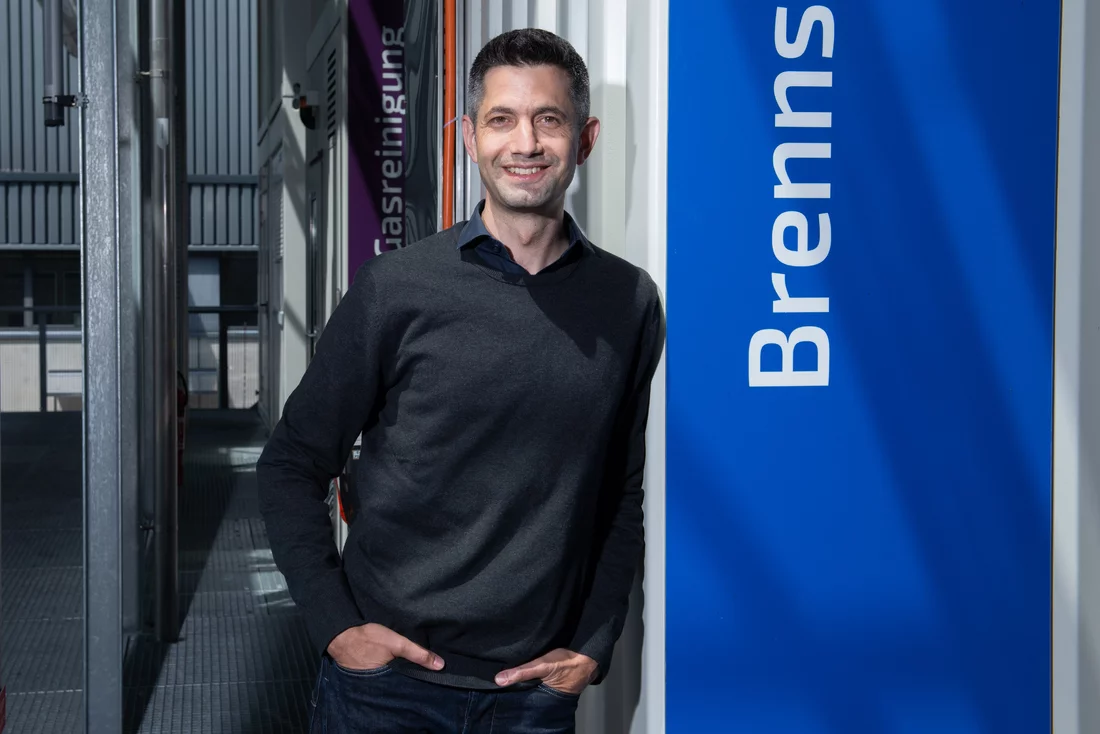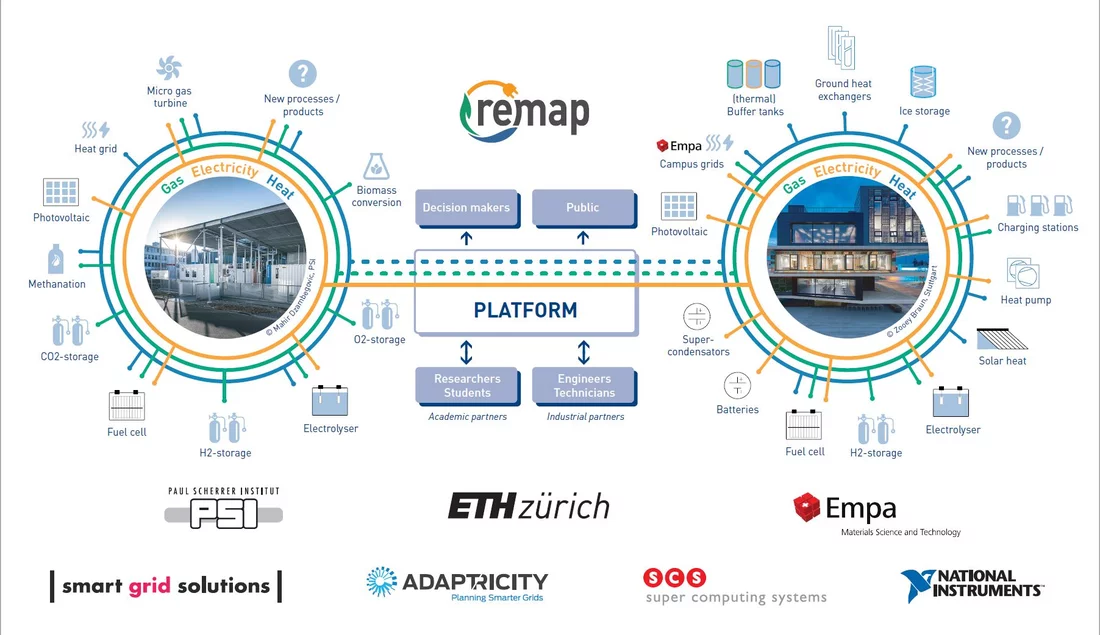Mr. Hofer, June 5th is the start of the project ReMaP, a research cooperation in which PSI plays a key role, together with the Swiss Federal Laboratories for Materials Science and Technology (Empa) and ETH Zurich. What is this about?
ReMaP stands for Renewable Management and Real-Time Control Platform. Together with ETH Zurich, we are technically linking the research and development platforms NEST, move and ehub of Empa with the PSI research and development platform ESI. This allows the facilities to be operated and studied in a networked manner.
Why are you doing this?
Switzerland's Energy Strategy 2050 calls for the restructuring of our energy system. That includes a significant increase in the share of renewable energy in our power supply from sources like the sun and wind. This presents us with new challenges in terms of the production, conversion, storage, and distribution as well as consumption of energy. We'll have to be able to keep supply and demand balanced, even if there is more fluctuating energy in the grid. In detail, it is not yet clear how all this will work. With the demonstrators of the ESI platform and Empa's research platforms ehub, NEST and move, we can examine such topics in depth.
What are the concrete contributions of the partners?
With the systems of the ESI platform we can investigate in particular topics associated with energy storage and conversion. At Empa, with the building monitor NEST, different energy consumers in the building sector, among others, can be studied, and with move, various forms of future mobility. ReMaP combines these research platforms on the control side, meaning that one can examine the entire chain of production, conversion, storage, and consumption in the interplay of the different systems.
Who has access to the project? Who can do research with it?
To begin with, all of the direct participants. In addition to ETH Zurich, Empa and PSI, these include the companies "smart grid solutions", Adaptricity and Supercomputing Systems, which deal with other topics such as the planning, optimisation and operation of distribution grids or digital decentralised systems. However, the platform is open to all interested parties, both nationally and internationally, from research and industry. All are invited to submit proposals for further cooperation projects.
Are there already initial research projects with ReMaP?
There are already ten experiments planned for the first phase of ReMap. These experiments should be carried out by 2021. One example is the development of an algorithm, ultimately a computer program that automatically optimises the extraction and storage of solar energy as a function of the weather forecast and the history of consumption. In this case, the energy obtained with solar modules is temporarily stored by means of electrolysis in hydrogen and later converted back into electricity via a fuel cell when a corresponding demand arises, for example, in office buildings.
So it's not just about which energy sources we're tapping, but also how and when we use the energy?
Precisely. Many questions revolve around the temporal decoupling of energy production and consumption. With the new renewable energy sources, nature often dictates when we can produce energy. But that won't always be exactly when we want to use it. So we need intelligent and economical systems to store energy, but we also have to take care to shift energy consumption as much as possible to the times when energy can be gained. Another important factor is efficiency. We want to explore ways of making the most efficient use of renewable energy.
This research will certainly also generate a huge amount of data. How do you process it all?
With respect to the control and simulation platform, we plan to base the project on a so-called cloud. That way, these data and programs become accessible anywhere, and we can make use of computing capacity as needed.
Is the ReMaP construct unique?
I think that this research and development platform is truly unique in its specific composition and form. Besides that, there is an enormous amount of knowledge behind it. Certainly there will be separate components elsewhere similar to those of ReMaP, but in its entirety there is no such system anywhere else.
Interview: Paul Scherrer Institute/Sebastian Jutzi
Editor’s note: ReMaP is supported by the Swiss Federal Office of Energy and the ETH-Foundation.
Contact
Marcel Hofer
Project Manager and Coordinator, ESI
Paul Scherrer Institute, Forschungsstrasse 111, 5232 Villigen PSI, Switzerland
Telephone: +41 56 310 21 74, e-mail: marcel.hofer@psi.ch


